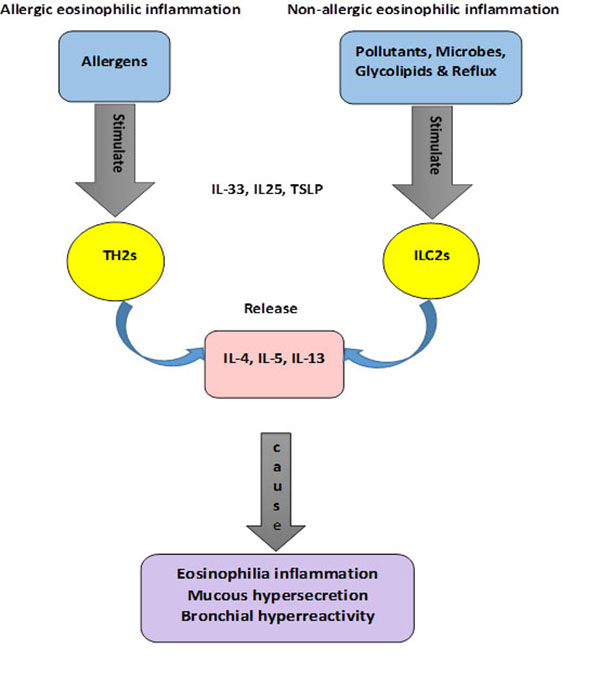Fig. (1) Overview of hypothetical functions of T helper type 2 (TH2) cells and innate lymphoid type 2 (ILC2) cells that lead to eosinophilic airway inflammation through two different pathways. In allergic eosinophilic airway inflammation, TH2 cells stimulated by dendritic cells in present of allergens. TH2 release interleukin-4 (IL-4), IL-5 and IL-13, and leading to immunoglobulin E (IgE) synthesis, eosinophilia inflammation and bronchial hyperreactivity. In non-allergic eosinophilic airway inflammation, ILC2s activated in present of air pollutants, microbes, glycopipids & reflux through an antigen-independent manner. Activated ILC2s release IL4, IL-5 and IL-13, causing eosinophilia inflammation, mucous hypersecretion and bronchial hyperreactivity. TH2 cells and ILC2 cells both activated in the present of IL-33, IL-25 and TSLP (thymic stromal lymphopoietin).

